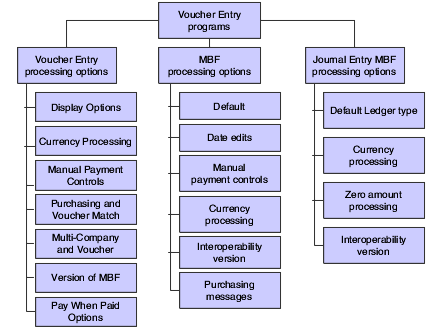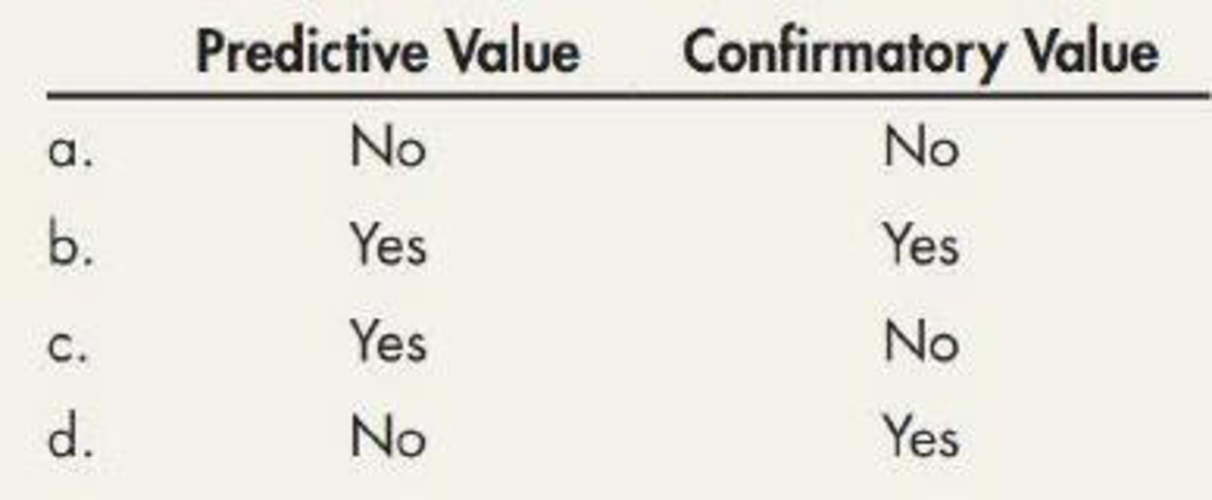
During periods of rapid growth, working capital can be a strongly negative number, since the company must invest in more accounts receivable than usual. One method of determining budgeted COGS involves accumulating the amounts from the previous sub-budgets as follows. The two major components of master budget are the operating budget and the financial budget. This communication tends to be good for morale and enhance jobs satisfaction.
Plan to make former Suffolk psych center grounds ‘a real highlight’ of New York State parks system is ready – Newsday
Plan to make former Suffolk psych center grounds ‘a real highlight’ of New York State parks system is ready.
Posted: Tue, 22 Aug 2023 21:55:45 GMT [source]
The capital expenditures budget outlines the business’s investments in long-term assets such as buildings, equipment, and technology. Spreadsheets help managers perform what-if analysis by linking the components of the master budget and automatically making changes to budget schedules when certain estimates are revised. Although many organizations may have variable and fixed costs in this budget, Jerry’s Ice Cream treats all selling and administrative costs as fixed costs.
Accounting and Accountability
A similar problem can arise with inventory, which is another component of working capital. It generally takes more inventory to support more sales, so the portion of working capital comprised of inventory can be expected to increase in conjunction with more sales. Thus, it is extremely likely that a company experiencing any amount of growth will forecast negative cash flows, because of the need to fund additional working capital.
- Moving to intranet budgeting benefited PNNL’s F&O Business Office in several ways.
- Businesses can use accounting software to create budgets, track expenses, and generate reports, saving time and increasing accuracy.
- Sustainability ensures that businesses act socially responsibly and contribute to the common good.
- Hence, the summary budget is considered in many angles and approved with some minor and/or major changes according to the changed conditions.
- By identifying areas where they may be overspending or underspending, businesses can reallocate resources to areas that need more support.
Master budgeting is a vital process that allows businesses to plan and manage their finances effectively. A master budget is a comprehensive financial plan that outlines a company’s revenue, expenses, and cash flow over a specific period, usually one year. The bottom section of the cash budget is where the ending cash balance is calculated for each budget period. The manager responsible for cash planning, typically the treasurer, scrutinizes this section carefully. Some organizations must borrow cash to fund the timing difference between when cash is used for production and when cash is received from sales. The cash budget will signal when short-term borrowing is necessary and allows time for the treasurer to arrange for financing.
Problems with the Master Budget
Keep reading for a closer look at what’s included in a master budget, as well as how to use it. Both manufacturing and non-manufacturing companies can benefit from a master budget. The budget committee usually develops the master budget for each year, guided by the budget director, who is usually the controller of the company. They usually plan the operating budgets first since the information from the operating budgets is needed for the financial budgets.
While this does not create a major expenditure for large or medium sized organizations, smaller companies may find it difficult to justify the costs involved. Many small, potentially profitable firms, do not plan effectively and eventually fail as a result. Cash flow problems are common, e.g., not having enough cash available (or accessible through a line of credit with a bank) to pay for merchandise or raw materials or to meet the payroll. Many of these problems can be avoided by preparing a cash budget on a regular basis. It helps managers and executives identify revenue sources, track expenses, and plan ahead for future financial needs.
What Are the Key Components of a Master Budget?
Also add the capital expenditures budget and the cash-flow budget to arrive at a budgeted balance sheet. All the divisional heads of the company prepare a budget for their particular division. These small budgets are compiled and converted into a large company budget known as the master budget. It is a futuristic plan or strategy the company’s management makes to ascertain the level a company wants to reach. This includes expected sales made in the future, production to be done, purchases to be made, expenses to be incurred, capital investments to be made by the company in the future, etc. It also included Budgeted financial statements like a profit and loss statement and a projected balance sheet.
- Another is the use of the master budget for employee goal setting and incentives.
- A master budget charts out what a company should be spending each month in order to achieve its goals.
- In addition to the fiscal year, businesses should consider external factors that may impact their financial performance.
- Saylor Academy®, Saylor.org®, and Harnessing Technology to Make Education Free® are trade names of the Constitution Foundation, a 501(c)(3) organization through which our educational activities are conducted.
- These assumptions facilitate the planning process by removing many of the economic complexities.
If a business is unable to pay their bills when they are due – they may be trading while insolvent, which is illegal in Australia. It represents a company’s overall financial blueprint for the upcoming budgeting period, typically a fiscal year. The master budget includes all the lower-level budgets, such as sales, production, marketing, and cash. It is based on historical sales data, market trends, and other relevant factors such as consumer behavior, economic conditions, and competition. The production budget is a plan for producing goods and services required to meet the sales targets set in the sales budget.
Step 2: Create a production budget
The Facilities & Operations (F&O) Business Office at PNNL has over 130 budget activities, each of which requires an annual budget. Prior to 2000, activity managers were required to use Excel to process budget information. The F&O Business Office then uploaded this information to formulate the division’s budget. Figure 9.11 “Cash Budget for Jerry’s Ice Cream” shows the cash budget for Jerry’s Ice Cream. Amounts shown in parentheses represent cash outflows; amounts without parentheses represent cash inflows. Although each business can tailor the master budget to suit its own goals, there are a few common elements you’re likely to see.
Once the budget has been approved, it should be communicated to all relevant stakeholders and implemented as the basis for financial planning and decision-making throughout the organization. The cash budget is a quarterly record of all money that comes in and goes out of the company, categorized by spending type. The cash budget is crucial for managing cash flow, optimizing working capital, and avoiding cash shortages. The labor and hiring budget contains employee salaries, benefits, and human resources expenditures. It covers direct and indirect labor costs, including payroll taxes, training, and benefits. The labor and hiring budget is essential for managing human resources costs, ensuring compliance with labor laws, and achieving productivity targets.
From the course: Accounting Foundations: Budgeting
The new system allowed managers to use the Web to input budget information directly, thus eliminating the need to upload initial budgets and subsequent budget changes. A master budget provides insight into where a business is heading from a financial perspective. It’s a framework for understanding revenue, profit, expenses, and debt load, and it shows how a company is putting its capital to work. Some firms may not use one or another of the budgets, but most use some form of all of them. Companies use financial budgeting to facilitate planning and control within a business firm so that they can manage the financial aspects of their business and plan for new product expansion in the future.

All these worksheets are linked so changes to certain estimates are reflected in the appropriate budget schedules. The fourth line, selling and administrative costs, comes from the selling and administrative budget in Figure 9.8 “Selling and Administrative Budget for Jerry’s Ice Cream”. The bottom line of the budgeted income statement, net income, is gross margin minus selling and administrative costs. Income tax expense is not included in this example for the sake of simplicity. However, income taxes can significantly reduce projected net income and cash flows.
The comprehensive set of budgets that covers all phases of an organization’s operations is called a master budget. The first step in preparing a master budget is to forecast sales of the organization’s services or goods. Based on the sales forecast, operational budgets are prepared to plan production of services or goods and to outline the acquisition and use of material, labor and other resources. Finally, a set of budget financial statements are prepared to show what the organization’s overall financial condition will be if planned operations are carried out. This calculation is more involved than equation 3b appears to indicate because it includes information for two future periods.
What should be included in a master budget?
The operating expenses and overhead budgets will be used to manage administrative and sales-related costs and ensure that the company operates efficiently. The cost of goods sold budget will be used to monitor production costs and ensure the company maintains profitability. Common individual budgets include the sales budget, production budget, manufacturing budget, labor and hiring budget, cash budget, operating expenses budget, overhead budget, and cost of goods sold budget. The manufacturing budget includes all the costs involved in manufacturing the number of products specified in the production budget. The manufacturing budget is crucial for managing production costs, optimizing production efficiency, and achieving profit margins.
Suppose that you are part of a team that is responsible for creating ABC Corporation’s Master budget. So, the sales, or revenue expectations are the foundation of every annual business plan. Bringing together various streams of interrelated information can be a cumbersome task.
Depreciation is deducted at the bottom of the manufacturing overhead budget to determine cash payments for overhead because depreciation is not a cash transaction. We begin the budget process by discussing the planned operating budget or projected income statement. Lord’s firm helps venture-backed startups create financial plans and master budgets.


Share your feedback about this course